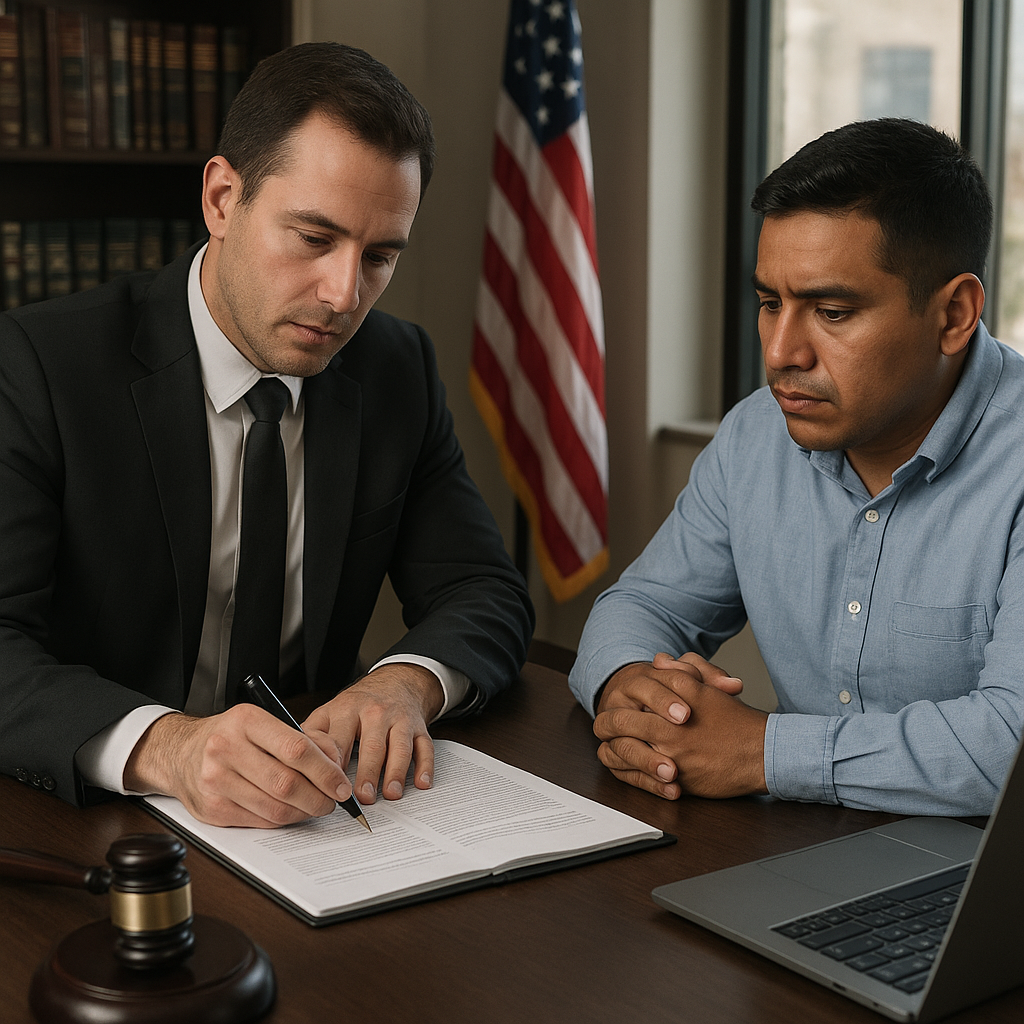Criminal defense attorneys navigating cases with immigration consequences must balance intricate statutes, evolving case law, and the unique stakes that noncitizen clients face. This article explores how defense counsel integrates both criminal and immigration considerations to safeguard clients from potential removal, inadmissibility, and other collateral **consequences**.
Understanding the Intersection of Criminal Law and Immigration
When a noncitizen is charged with a crime, the traditional goals of criminal defense—avoiding jail time, minimizing fines—are only part of the picture. Equally critical are the **immigration** repercussions. A conviction for certain offenses can trigger:
- Mandatory deportation or removal proceedings
- Findings of inadmissibility, barring reentry to the United States
- Ineligibility for legal relief, such as asylum or adjustment of status
- Enhanced detention or removal priority under immigration enforcement policies
Failure to address these issues at the outset can result in harsh outcomes even if the client avoids incarceration. The defense attorney’s role extends beyond courtroom advocacy to strategic planning with an eye on immigration law’s nuanced triggers and exceptions.
Key Legal Definitions
- Aggravated felony: A broad category that includes many crimes and often leads to permanent removal.
- Crime involving moral turpitude (CIMT): A term used to assess dishonesty or vile behavior, which can render a person deportable or inadmissible.
- Nonviolent misdemeanors: Often treated more leniently in immigration contexts but still risky if they carry potential jail time.
- Deferred action and prosecutorial discretion: Tools that may temporarily shield a person from enforcement.
Key Legal Strategies in Criminal-Immigration Cases
Designing a coherent defense strategy requires close collaboration between criminal defense counsel and immigration specialists. Effective approaches include:
- Diversion programs: Seeking alternative sentencing or rehabilitation avoids formal convictions that could have immigration fallout.
- Plea negotiations: Crafting plea agreements that reduce charges to non-immigration-triggering offenses, such as misdemeanors without jail time.
- Charge dismissal: Pursuing motions to suppress evidence or dismiss counts to eliminate harmful immigration predicates.
- Expungement planning: Evaluating whether state-law relief is available to clear convictions from public record.
Each option carries a different level of risk and benefit, and the decision-making process must incorporate both criminal and immigration impact analyses.
Collaborative Case Assessment
Defense teams often hold joint meetings with:
- Immigration counsel to interpret how a specific charge is classified under federal immigration statutes.
- Client interviews to gather personal-history details that may support relief applications, such as cancellation of removal or adjustment of status.
- Pretrial conferences to present immigration-based arguments for reduced bail or modified conditions that limit contact with enforcement authorities.
Collaborative Approach with Immigration Experts
Seasoned criminal attorneys recognize their own limits and enlist specialized immigration lawyers to:
- Conduct removal defense alongside criminal proceedings, coordinating strategy and court appearances.
- Prepare detailed memoranda on the immigration consequences of each plea option.
- File direct applications for relief in immigration court, such as asylum or withholding of removal, if a criminal defense outcome appears unavoidable.
This teamwork ensures that every step in the criminal process—from arraignment through sentencing—takes into account the full spectrum of the client’s legal exposure.
Role of Social and Mitigation Evidence
Effective defense teams gather robust evidence to support both criminal mitigation and immigration relief:
- Letters from employers, family members, and community leaders attesting to good moral character.
- Documentation of medical conditions, mental health diagnoses, or trauma that might warrant leniency in sentencing and sympathy in removal proceedings.
- Proof of rehabilitation efforts, such as participation in treatment programs, education, or volunteer work.
Case Studies Illustrating Challenges and Solutions
Real-world examples highlight the complexity of criminal-immigration intersections and the ingenuity required for successful outcomes.
Case Study A: Misdemeanor Bargain to Avoid Deportation
A lawful permanent resident faced a felony drug charge carrying one year of possible incarceration. Counsel negotiated a plea to a first-offense possession misdemeanor, which under current regulations did not qualify as an aggravated felony. By securing probation instead of jail, the attorney effectively nullified the threat of removal.
Case Study B: Fighting a CIMT Finding in Immigration Court
An immigrant pleaded guilty to residential burglary, believing it was a nonviolent offense. In removal proceedings, immigration authorities argued the crime was a crime involving moral turpitude. The defense team filed a motion to vacate the plea based on inadequate counsel and negotiated a new plea to criminal trespass, an offense not deemed a CIMT. This creative legal maneuver preserved the client’s eligibility for adjustment of status.
Case Study C: Deferred Prosecution and Advocacy
In a high-profile public integrity case, a noncitizen professional was accused of fraud. Instead of traditional prosecution, the U.S. Attorney’s Office offered a deferred prosecution agreement. The defense lawyer documented the client’s exemplary record and positioned the agreement as both punitive and rehabilitative. Upon successful completion, no conviction was entered, preventing any immigration consequences.
Key Takeaway
These examples underscore the importance of proactive planning, thorough research, and persuasive advocacy. Criminal defense attorneys must stay current with shifting policies and collaborate closely with immigration experts to secure the best possible outcomes for clients facing dual jeopardy in criminal and immigration systems.




